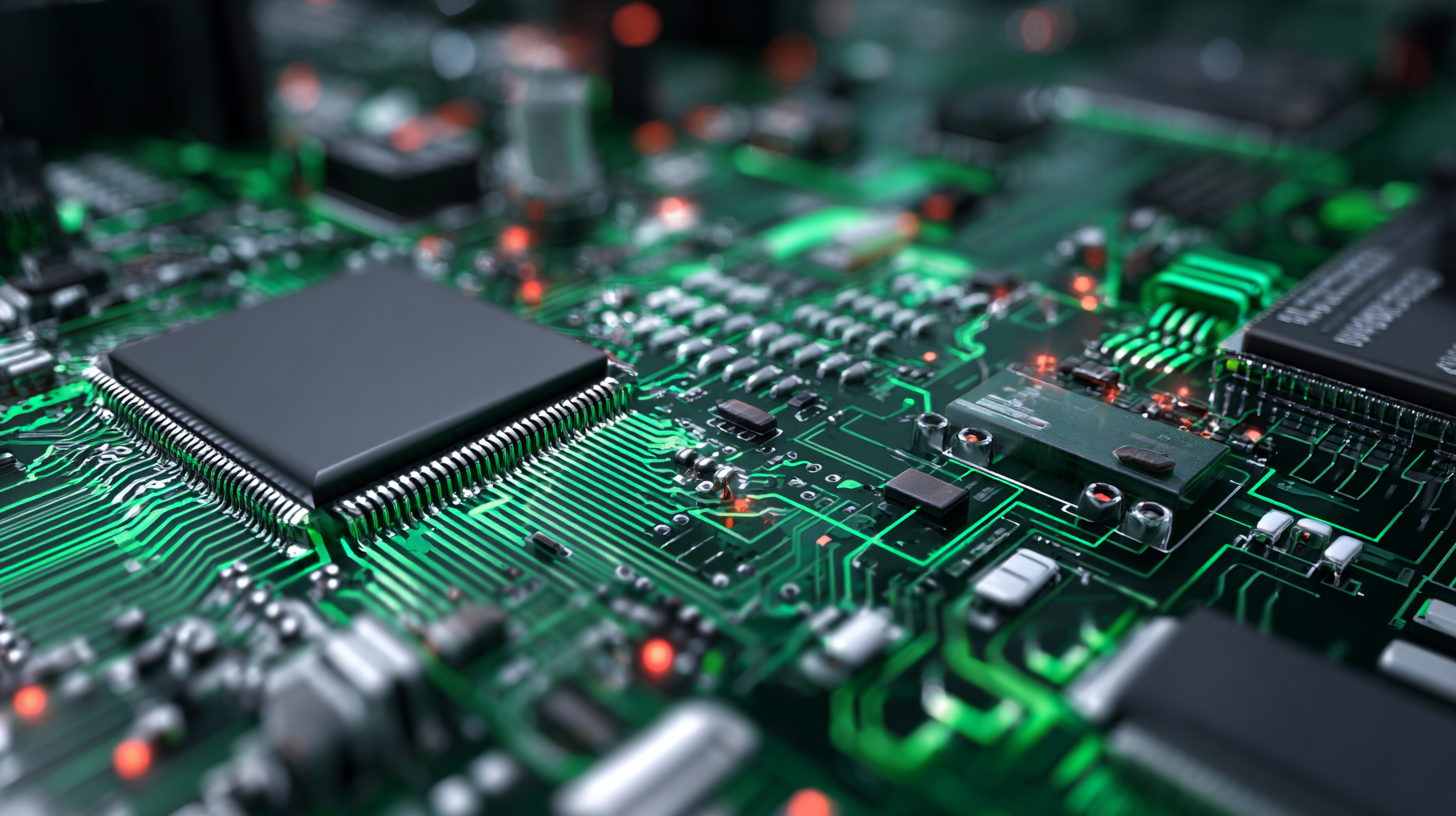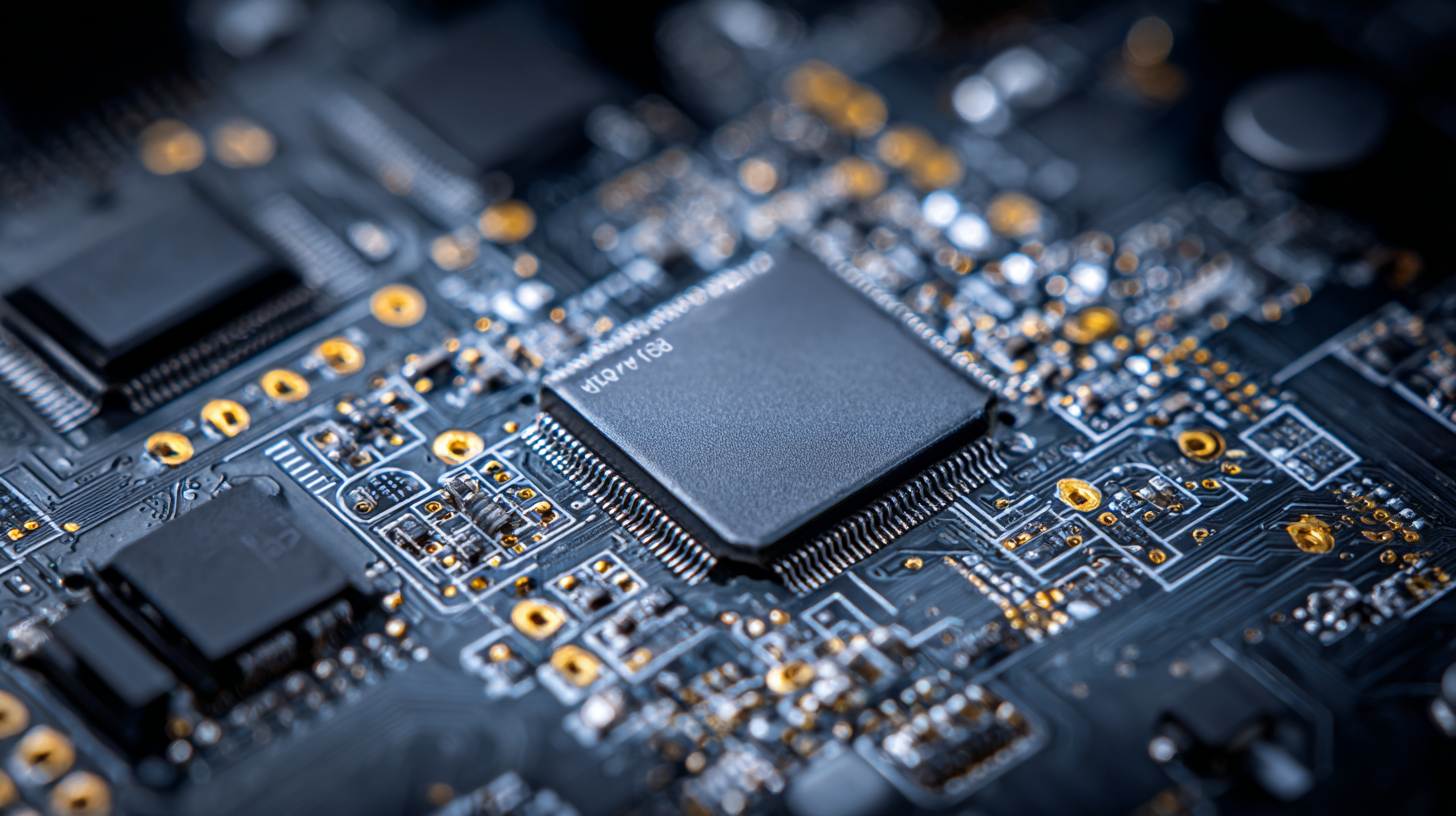As we look towards 2025, the landscape of technology is rapidly evolving, driven by groundbreaking innovations and advancements in various sectors. One critical area seeing tremendous growth is the development of PCB board components, which are essential for the functionality and efficiency of electronic devices. These components not only dictate the performance of products but also influence design versatility and manufacturing processes. Emerging trends indicate that the integration of advanced materials, miniaturization techniques, and sustainable practices in PCB design will significantly shape future technology applications.

In this blog, we will explore the pivotal role of innovative PCB board components, examining how they are set to revolutionize industries and elevate consumer experiences in the coming years. By understanding these trends and their implications, we can better prepare for a future where technology becomes increasingly interconnected and intelligent.
The rapid advancement of technology has led to the emergence of innovative PCB designs that significantly enhance performance efficiency in smart devices. As devices become more complex and interconnected, the demand for high-quality printed circuit boards has surged. These innovative PCBs are not only compact but also incorporate advanced features such as miniaturization and a higher density of components, which allows for improved signal integrity and reduced power consumption.
One of the key developments in PCB design is the use of flexible and hybrid materials that enable new form factors and functionalities. This trend facilitates the incorporation of PCBs into a variety of shapes and sizes, making them more adaptable to various smart devices, from wearables to smart home gadgets. Additionally, technologies like embedded components and advanced thermal management systems are being integrated into PCB designs, enhancing overall device performance and longevity. As we move towards 2025, these advancements in PCB technology will play a crucial role in shaping the future landscape of smart devices, driving efficiency and innovation across various sectors.
The electronics industry is on the brink of a revolutionary change, driven by the emergence of innovative materials that are set to transform PCB manufacturing and sustainability practices. In 2025, we are witnessing a shift towards eco-friendly substances that not only enhance performance but also significantly reduce the environmental impact of printed circuit boards.
Biodegradable polymers and recyclable substrates are becoming increasingly popular, allowing manufacturers to produce high-quality PCBs while minimizing waste.
In addition to these sustainable materials, advancements in nanotechnology are paving the way for ultra-thin and lightweight components that retain strength and functionality.
These new materials can be integrated into flexible PCBs, enabling the development of wearables and smart devices that conform to various shapes and surfaces. By merging creativity with cutting-edge science, manufacturers are striving to create PCBs that not only meet the growing demands for efficiency and functionality but also align with global sustainability goals, making the future of technology not just innovative, but responsible.
The rapid miniaturization of PCB components is poised to revolutionize technology applications by 2025. According to a recent report by IDTechEx, the global market for miniaturized printed circuit boards is projected to reach $6.7 billion by 2025, driven largely by advancements in consumer electronics, IoT devices, and medical technology. This trend reflects a broader demand for smaller, more efficient devices, enabling increased functionality without compromising performance.
 Key technologies enabling this miniaturization include the development of advanced materials such as high-density interconnect (HDI) PCBs and flexible printed circuit boards (FPCBs). These innovations not only reduce the physical footprint of components but also facilitate complex circuit designs that were previously unachievable. A study from IPC indicates that 50% of PCB manufacturers are investing in leading-edge fabrication techniques to meet these demands, highlighting the industry's commitment to staying at the forefront of technological advancements. As companies continue to innovate, the integration of miniaturized PCB components into future tech applications will undoubtedly lead to more sophisticated and capable devices, paving the way for smarter living environments.
Key technologies enabling this miniaturization include the development of advanced materials such as high-density interconnect (HDI) PCBs and flexible printed circuit boards (FPCBs). These innovations not only reduce the physical footprint of components but also facilitate complex circuit designs that were previously unachievable. A study from IPC indicates that 50% of PCB manufacturers are investing in leading-edge fabrication techniques to meet these demands, highlighting the industry's commitment to staying at the forefront of technological advancements. As companies continue to innovate, the integration of miniaturized PCB components into future tech applications will undoubtedly lead to more sophisticated and capable devices, paving the way for smarter living environments.
The integration of Artificial Intelligence (AI) and the Internet of Things (IoT) is revolutionizing the landscape of PCB design, marking a transformative shift in how electronic components are conceptualized and manufactured. In 2025, we can expect to see PCBs that not only accommodate increasing complexity but also adapt dynamically to user needs and environmental conditions. AI algorithms will play a pivotal role in optimizing PCB layout and routing processes, enabling designers to create more efficient and reliable circuits than ever before. This innovation reduces time-to-market for new products and enhances their performance metrics, crucial in today’s fast-paced technological environment.
Moreover, the synergy between IoT-enabled devices and advanced PCB designs lays the foundation for smarter ecosystems. As more devices become interconnected, PCBs will need to support seamless data communication and power management across a network of sensors and actuators. This evolution will necessitate the use of flexible materials and advanced connectivity options that can accommodate a growing demand for miniaturization and multi-functionality. As PCBs evolve to meet these challenges, we will witness the emergence of highly integrated solutions that drive forward innovations in consumer electronics, automotive applications, and beyond.

As we look toward 2025, the printed circuit board (PCB) industry is poised for significant transformation, with China maintaining its stronghold as the leader in global PCB exports. According to a report by ResearchAndMarkets, the global PCB market is projected to exceed $100 billion by 2025, with China accounting for approximately 50% of this market share. This dominance is largely attributed to China's advanced manufacturing capabilities, cost efficiencies, and robust supply chain networks that cater to various sectors, including consumer electronics and automotive industries.
China's sustained growth in PCB exports can be attributed to its ability to innovate and adapt to changing technologies. A recent analysis from PCB Market Insights indicates that the country produces over 60% of PCBs used in mobile devices, which are expected to see a 10% increase in demand over the next few years. Moreover, with a strong push towards automation and smart manufacturing practices, Chinese PCB manufacturers are increasingly leveraging technologies such as AI and IoT to enhance production efficiency and quality control, further solidifying their competitive edge in the global market. As we advance into 2025, this technological prowess will play a pivotal role in shaping the future landscape of the electronics industry.